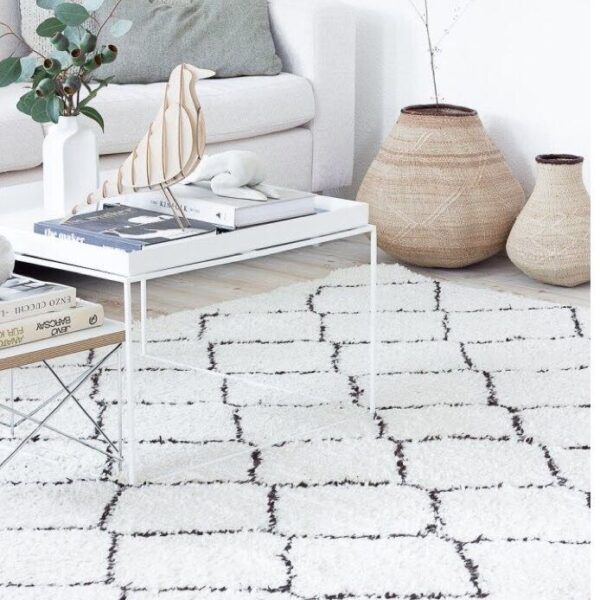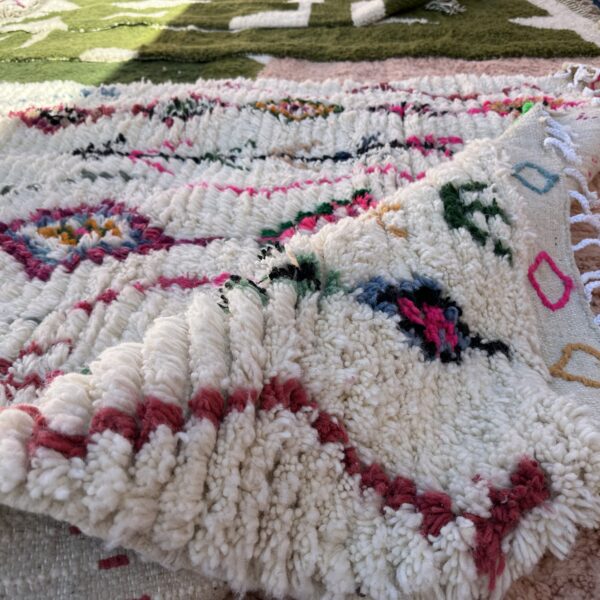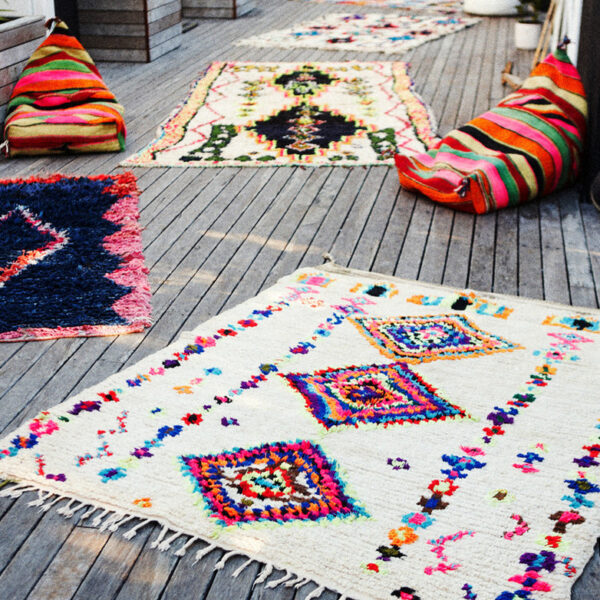The history of Moroccan rug making is rich and deeply rooted in the cultural heritage of the indigenous Berber people of Morocco. These rugs have a long and storied history, dating back centuries. Here is an overview of the history of Moroccan rug making:
- Ancient Origins: The art of rug making in Morocco can be traced back to prehistoric times. Berber tribes, who are the indigenous people of North Africa, have a tradition of crafting textiles and rugs using natural materials and weaving techniques that have been passed down through generations.
- Traditional Craftsmanship: Moroccan rugs have traditionally been handwoven by Berber women in their homes and communities. The weaving process is labor-intensive and involves the use of simple, traditional tools such as a loom.
- Nomadic and Rural Lifestyle: The Berber people have historically led a nomadic or rural lifestyle, and rug making was a practical necessity. Rugs served as insulation in tents and homes, providing warmth in the harsh mountain and desert climates of Morocco.
- Unique Regional Styles: Different regions of Morocco have developed their own distinct styles of rug making, with each area producing rugs known for specific designs, motifs, and colors. For example, the Beni Ourain rugs, Azilal rugs, and Atlas Mountain rugs all have their unique characteristics.
- Cultural Significance: Moroccan rugs are more than just functional items; they hold cultural, symbolic, and spiritual significance. The designs on these rugs often incorporate symbols and motifs that convey stories, beliefs, and aspects of daily life within the Berber communities.
- Use of Natural Materials: Moroccan rugs are known for their use of natural materials, including high-quality wool sourced from local sheep. The dyes used to color the wool have traditionally been made from plants, minerals, and other natural sources.
- Growing International Recognition: In recent decades, Moroccan rugs have gained international recognition and popularity, attracting collectors, interior designers, and tourists. Their unique and eclectic designs, along with their connection to authentic craftsmanship, have made them sought-after items.
- Preservation Efforts: In an effort to preserve traditional rug making techniques and promote fair trade practices, various organizations and cooperatives have been established in Morocco to support Berber weavers and ensure the cultural heritage of rug making endures.
Moroccan rugs continue to be highly prized for their cultural and artistic value, and they are a significant part of Morocco’s cultural identity. The tradition of rug making remains vibrant and relevant today, with artisans creating beautiful pieces that are both functional and decorative.





















